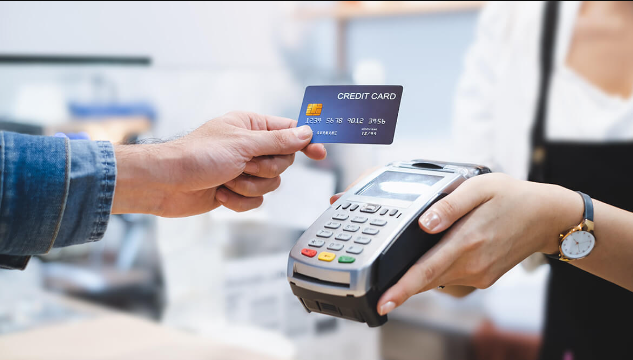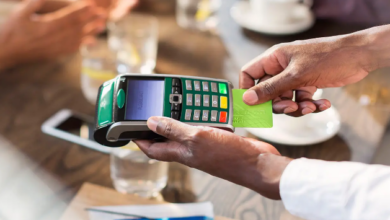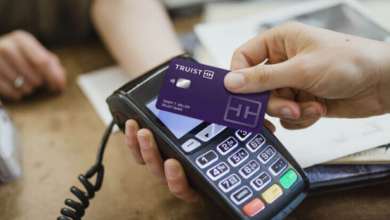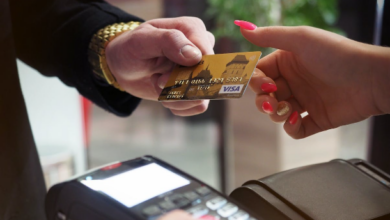Credit Card Processing

Credit Card Processing – Credit card processing is the series of steps that take place when a customer uses a credit card to make a purchase. The process begins when the customer swipes their card at a point-of-sale (POS) terminal. The POS terminal then sends the customer’s credit card information to the merchant’s credit card processor.
The processor then verifies the customer’s credit card information and sends it to the credit card network. The credit card network then approves or declines the transaction and sends the response back to the processor. The processor then sends the response back to the POS terminal, which prints a receipt for the customer.
What is Credit Card Processing

Credit card processing is the behind-the-scenes magic that allows you to swipe your plastic and walk out with a purchase. It’s a series of steps that ensure a smooth transaction between you (the customer), the store (the merchant), and your bank (the issuing bank).
Here’s a simplified breakdown:
- Swipe and Send: You swipe your card at a store’s terminal. This sends your card information to the merchant’s credit card processor.
- Verification Check: The processor checks your card details with your bank (the issuer) to verify if you have enough funds and the card is valid.
- Network Approval: The processor communicates with the card network (like Visa or Mastercard) which verifies the transaction with your bank.
- Go or No-Go: The network sends an approval or decline message back to the processor.
- Receipt and Funds: The processor relays the approval to the terminal, which prints your receipt. Funds are deducted from your account later (settlement).
This process typically happens in seconds, making it a seamless experience for you.
The Players Involved in Credit Card Processing
There are several key players involved in the smooth flow of credit card processing. Here’s a breakdown of their roles:
- The Merchant: This is the business you’re making the purchase from, like a store or restaurant. They need a merchant account to accept credit cards and a POS (point-of-sale) terminal to process your payment.
- The Customer (Cardholder): You, the person using your credit card to make the purchase. You have a credit card issued by a bank, and hopefully, enough available credit to cover the cost!
- The Merchant’s Acquiring Bank: This is the bank that provides the merchant with their merchant account and POS terminal. They handle collecting payments from the credit card networks and depositing them into the merchant’s account (minus any fees).
- The Issuing Bank: This is the bank that issued your credit card and holds your credit line. They receive authorization requests from the merchant’s processor and verify if your account has sufficient funds and the transaction is legitimate.
- The Card Network (Visa, Mastercard, etc.): These are the behind-the-scenes communication channels. They act as a neutral party, securely facilitating communication between the merchant’s processor, the issuing bank, and approving or declining transactions based on the information received.
Bonus Players:
- Payment Processor: Sometimes separate from the merchant’s acquiring bank, the processor handles the actual authorization process, communicating with the card network and issuing bank.
- Payment Gateway: This acts as an intermediary between the merchant’s website and the processor, handling online transactions securely.
These players work together to ensure a secure and efficient credit card transaction, allowing you to make purchases with ease.
The Steps Involved in Credit Card Processing
Credit card processing might seem like magic, but it’s actually a series of well-coordinated steps. Here’s a breakdown of the typical flow:
1. Initiation: The Swipe and Send
- You make your purchase at a store and swipe your card, or enter your card details online, at the point-of-sale (POS) terminal.
- The POS terminal captures your card information securely, including card number, expiry date, and CVV (security code).
2. Verification: Checking Funds and Validity
- The merchant’s credit card processor receives the information from the POS.
- The processor acts as a middleman, sending your card details to the card network (Visa, Mastercard, etc.).
3. Network Communication: Reaching the Issuing Bank
- The card network securely transmits your information to your bank (the issuing bank).
- This information includes the transaction amount and authorization request.
4. Authorization: A Green Light (or Red)?
- Your issuing bank verifies your card details, checks your available credit, and ensures the transaction isn’t suspicious.
- This might involve additional security checks depending on the bank’s policies.
5. Response: Approval or Denial
- The issuing bank sends an approval or decline message back to the card network.
- If approved, the message includes a unique authorization code.
6. Completion: Receipt and Funds Movement (Later)
- The card network relays the approval (or decline) message to the processor.
- The processor sends the final go-ahead to the POS terminal.
- The terminal prints your receipt, and you complete your purchase.
After the Sale (Settlement):
- It’s important to note that receiving your receipt doesn’t necessarily mean the funds have moved immediately.
- Typically, there’s a batch settlement process where transactions are grouped and sent for final settlement between banks. This can take a few business days.
- During settlement, funds are transferred from your issuing bank to the merchant’s acquiring bank, minus any processing fees.
This is a simplified overview, and some variations might exist depending on the specific setup. But it gives you a good understanding of the key steps involved in making a secure and smooth credit card transaction.
The Costs of Credit Card Processing
There are a number of costs associated with credit card processing, including:
- Merchant fees: Merchant fees are the fees that the merchant pays to the credit card processor.
- Discount rates: Discount rates are the percentage of the transaction amount that the merchant pays to the credit card network.
- Chargeback fees: Chargeback fees are the fees that the merchant pays to the credit card network when a customer disputes a transaction.
The Benefits of Credit Card Processing
There are a number of benefits to credit card processing, including:
- Increased sales: Credit card processing can help merchants increase sales by making it easier for customers to pay for goods and services.
- Improved customer convenience: Credit card processing can improve customer convenience by allowing customers to pay for goods and services without having to carry cash or checks.
- Reduced fraud: Credit card processing can help reduce fraud by using a variety of security measures to protect customer data.
The Future of Credit Card Processing
The future of credit card processing is likely to be characterized by a number of trends, including:
- The increasing use of mobile payments: The increasing use of mobile payments is likely to lead to a decline in the use of traditional credit cards.
- The growth of contactless payments: The growth of contactless payments is likely to make it easier and faster for customers to pay for goods and services.
- The adoption of new security measures: The adoption of new security measures is likely to help protect customer data from fraud.
Conclusion
Credit card processing is a complex process that involves a number of different players. However, the benefits of credit card processing, such as increased sales and improved customer convenience, make it a valuable tool for merchants of all sizes.




